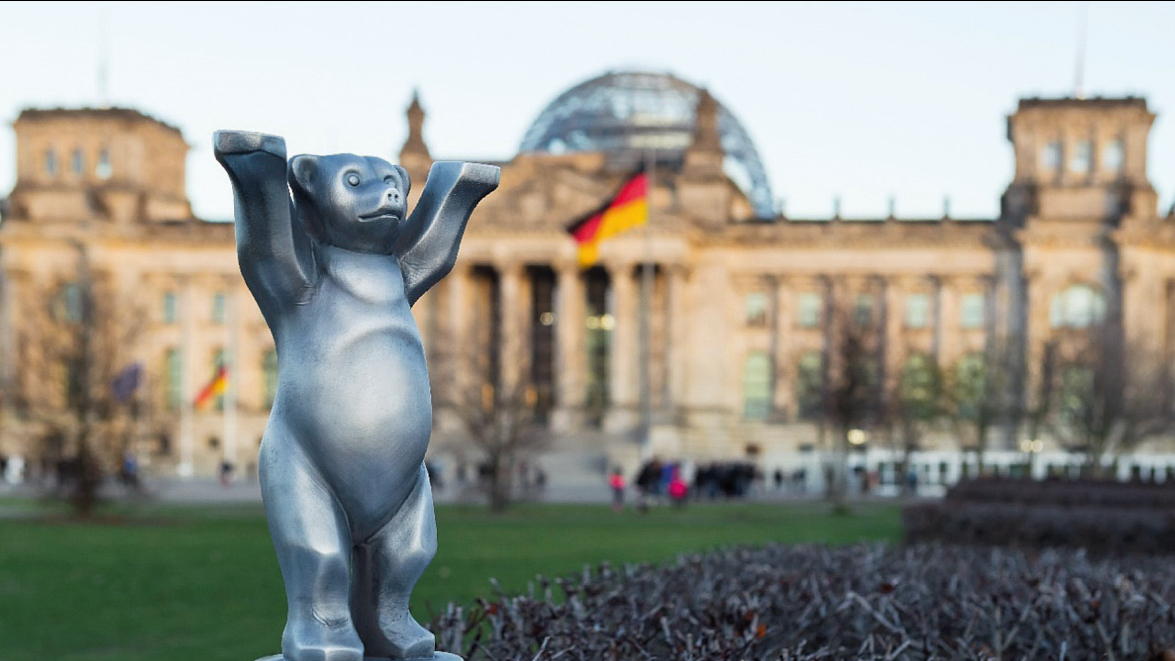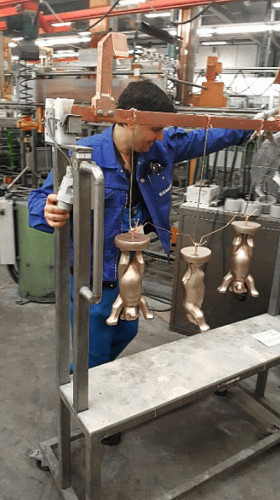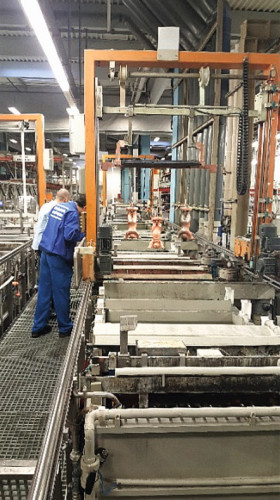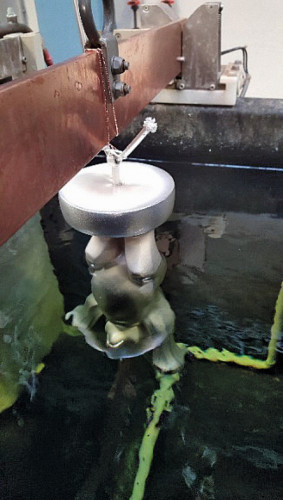Who doesn't know the Buddy Bear, who with his raised arms is immediately perceived as a popular figure and associated with pure joie de vivre. This optimistic charisma quickly made him popular and as a bear he naturally also represents the capital city of Berlin. Now he has been silver-plated at Siemens in Berlin.
The silver-plated Buddy Bear served the training provider Kenic GmbH as an advertising medium for electroplating seminars
This symbolism predestined the bear for an award at a worldwide Cross Functional Day of the Business Unit Distribution System of Siemens AG. At Siemens AG's Surface Technology Center in Berlin, a Buddy Bear had to be silver-plated to increase its radiance.
The implementation of this project was an interesting change from the otherwise very throughput-driven and purely technically oriented operation of electroplating. As a result, the bear was carefully carried by hand through the various systems, such as the small parts painting system, aluminum silvering machine and manual bath system, in order to systematically combine all the necessary process steps.
Process sequence
The initial state was the so-called self-painting bear made of synthetic resin by Buddy Bär Berlin GmbH. The following process sequence was chosen to coat the bear: Silver conductive lacquer, copper plating (electroless), copper plating (sulphuric acid), silver plating (cyanide), old silver, clear lacquer.
Conductive lacquer and copper plating
The first step was to insert an eyebolt into the base of the bear in order to ensure power transmission and to create a suspension device primarily for the machine, which made it possible to dip the bear. The silver conductive varnish was applied in two manual steps, after which the varnish was activated in the vending machine by electroless copper plating. For this purpose, the bears were attached upside down to a cathode rail and then automatically immersed. This critical process step was carried out in the first rinse of the sulphuric acid electrolyte to allow copper nuclei to grow slowly. The actual sealing of the crystallization nuclei took place in the sulphuric acid electrolyte. The nuclei were first closed to form a thin covering layer (0.3-0.5 A/dm2) and then strengthened by the subsequent ramp function of the current. Detachment of the first top layer was prevented by lowering the drying temperature to 40 °C.
Silver plating of the 3D bear
The bears were now separated again and carried individually to the hand bath. The actual silver plating of the bear with the silver layer took place in a cyanide silver electrolyte in the hand bath. As cyanides typically infiltrate lacquers, a dense, non-porous copper layer was the necessary prerequisite for an adhesive coating. The figure of the Buddy Bear represents a complex 3D component, which usually results in a non-optimal current density distribution during electroplating processes. By subsequently artificially discoloring the silver (old silver), the small quality defects could be corrected and finally protected with a clear lacquer.
Thus refined, the Buddy Bear shone in its new guise.
Acknowledgments:
The author would like to thank Kenic GmbH for providing the photo that shows the silver-plated Buddy Bear so impressively in front of the Reichstag. It was taken especially for the announcement of electroplating seminars. The Kenic Academy is a provider of officially recognized training courses, seminars and further training in Berlin Mitte, with the aim of conveying the essential requirements of the constantly changing environmental legislation in a practical way and thus successfully implementing the legally required further training measures.
THE AUTHOR
Dr. Nina Dambrowsky is an Environmental Health Safety Specialist at Siemens in Berlin
Photos: Siemens





